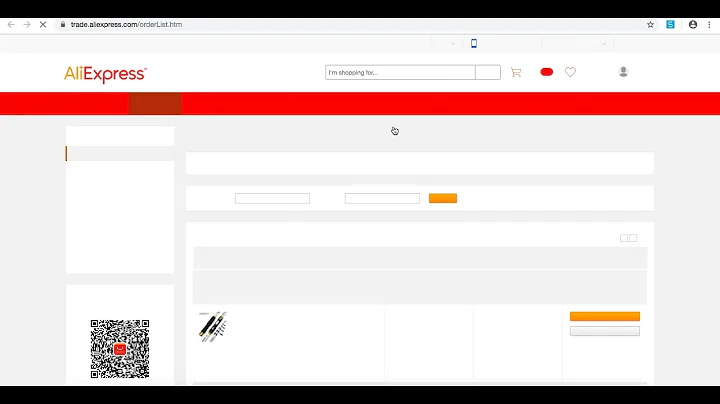Navigating Saturated Markets: Essential Tips for E-commerce Success
Table of Contents
- Introduction
- Understanding Saturation
- The Definition of Saturation
- Factors to Consider for Product Saturation
- Saturation in Different Niches
- 5.1 Evergreen Niches
- 5.2 Niche Size
- 5.3 Market Competition
- Evaluating Niche Potential
- Researching Product Demand
- Analyzing Competitors' Strategies
- Harnessing the Power of Originality
- Taking Advantage of dropshipping
- The Importance of Test Marketing
- Overcoming Fear of Saturation
- Seizing Opportunities in Q4
- Conclusion
Can a Product Be Too Saturated? Evaluating the Reality of Saturation in E-commerce
In the world of e-commerce, the question of product saturation often arises. Entrepreneurs and business owners wonder if a particular product can be too saturated and whether it is still viable to enter the market. Determining the saturation level of a product can be challenging, as it depends on various factors and personal interpretations. In this article, we will delve into the concept of saturation, explore its different facets, and provide guidelines to help entrepreneurs make informed decisions about entering saturated markets.
1. Introduction
With the rise of online businesses and the accessibility of product sourcing through platforms like dropshipping, the e-commerce industry has become increasingly competitive. Entrepreneurs must navigate through a sea of products and assess their potential profitability. Saturation, in this context, refers to the level of market demand and competition for a particular product. Understanding saturation is crucial for deciding whether to invest time and resources in selling a specific item.
2. Understanding Saturation
Before delving into the topic of saturation, it is essential to establish a clear definition. Saturation can encompass different aspects, including market visibility, ad creative saturation, and product availability. While some may conclude that a product is saturated based on a high number of views or sellers, it is crucial to analyze the broader market dynamics.
3. The Definition of Saturation
In the e-commerce landscape, saturation refers to the level of competition and market demand for a specific product. While a product with millions of views or engagements might appear saturated, it is essential to consider the overall market size. An ad with two million views may seem significant, but if it only reaches a fraction of the target market, saturation becomes a dubious claim.
4. Factors to Consider for Product Saturation
Assessing the saturation level of a product involves considering several factors:
4.1 Evergreen Niches
An evergreen niche refers to a market that consistently attracts new customers. For example, the dog niche sees an influx of new dog owners every year. Fresh buyers create opportunities for products such as dog toys, collars, and beds. When considering a niche, check if it has a steady influx of customers who would be interested in your product.
4.2 Niche Size
The size of the niche plays a crucial role in determining product saturation. A larger niche, such as the dog industry in the UK, with an estimated 10 to 15 million dog owners, offers more potential customers. Smaller niches, like bird watching, may struggle to generate substantial traction.
4.3 Market Competition
While it is essential to evaluate competition within a niche, ad creative saturation can occur faster than actual product saturation. Even if a few sellers offer the same product, examining the quality of their ad creatives can reveal opportunities for improvement. If other sellers use generic footage or similar ads, there is still room to capture customers' attention with original content.
5. Saturation in Different Niches
Saturation levels vary across niches, regardless of the number of sellers or views a product receives. It is crucial to assess the market dynamics and understand whether a niche is saturated or experiencing immense demand.
5.1 Evergreen Niches
Evergreen niches, such as the dog industry, constantly attract new customers. The continuous influx of dog owners creates opportunities for various products, making it less likely for a product to be truly saturated.
5.2 Niche Size
The size of a niche directly impacts its saturation level. Niches with millions of potential customers provide more room for competing sellers. It is important to analyze the size of the target audience when determining product saturation.
5.3 Market Competition
Competition within a niche is a crucial factor. However, even if multiple sellers offer the same product, it does not necessarily mean saturation. By focusing on originality and outperforming competitors in terms of content and ad creatives, an entrepreneur can still capture customers' attention and drive sales.
6. Evaluating Niche Potential
To assess the potential of a niche, entrepreneurs should consider the following factors:
- Market size and audience reach
- Niche growth rate and trends
- Market demands and customer preferences
- Competition landscape and existing players
By conducting comprehensive market research, entrepreneurs can gain insights into the potential saturation level and whether the niche offers a viable business opportunity.
7. Researching Product Demand
Understanding product demand is crucial in evaluating saturation. Entrepreneurs should analyze if their target audience is aware of the product or if it is readily available through other channels like Amazon or local stores. If a product is already popular and easily accessible, it might be challenging to enter that saturated market.
8. Analyzing Competitors' Strategies
Analyzing competitors' strategies provides valuable insights into the state of a niche. By examining their ad creatives, product availability, and engagement levels, entrepreneurs can identify gaps in the market or opportunities for improvement. Additionally, competitors' success does not necessarily indicate market saturation but rather emphasizes the importance of offering unique value propositions.
9. Harnessing the Power of Originality
In saturated markets, standing out becomes crucial. Original content, unique branding, and exceptional customer experiences can differentiate a business from its competitors. By consistently innovating and offering something fresh, entrepreneurs can attract customers' attention, even in supposedly saturated markets.
10. Taking Advantage of Dropshipping
One advantage of dropshipping is the ability to sell products worldwide without inventory costs. Entrepreneurs can leverage this flexibility to test different products and gauge their potential. By investing a reasonable amount in testing products and utilizing original ad creatives, entrepreneurs can determine if a product has the potential to succeed.
11. The Importance of Test Marketing
To overcome the fear of saturation, entrepreneurs should embrace test marketing. By investing a modest amount in advertising and product testing, entrepreneurs can gather real-time data and validate their assumptions. The results of test marketing will help entrepreneurs make informed decisions about the potential success of a product.
12. Overcoming Fear of Saturation
Entrepreneurs should not be deterred by the fear of saturation. The e-commerce industry is ever-evolving, and there are always opportunities to carve out a unique space. By understanding market dynamics, niches, and competition, entrepreneurs can enter supposedly saturated markets with confidence.
13. Seizing Opportunities in Q4
The fourth quarter, also known as Q4, presents unique opportunities for e-commerce businesses. With increased buying behavior and higher online spending during this period, entrepreneurs can benefit from the festive season. Q4 is a time when customers are more engaged and willing to explore new products, making it an ideal time to enter the market.
14. Conclusion
In the world of e-commerce, saturation is a complex concept that requires careful analysis and understanding of market dynamics. By evaluating evergreen niches, niche size, and competition levels, entrepreneurs can make informed decisions about entering supposedly saturated markets. Originality, test marketing, and the courage to seize opportunities are key to success in e-commerce. As the industry continues to evolve, entrepreneurs must embrace change and adapt their strategies to stand out in a crowded marketplace.
Highlights:
- Saturation in e-commerce is a multifaceted concept that requires consideration of market dynamics and personal interpretations.
- Evergreen niches and niche size play a significant role in determining saturation levels.
- Market competition, especially in ad creative, can become saturated faster than the actual product saturation.
- Evaluating niche potential and researching product demand are essential steps in assessing saturation.
- Originality, test marketing, and a willingness to seize opportunities are crucial for success in supposedly saturated markets.
- Q4 presents unique opportunities due to increased buying behavior and festive season engagement.
FAQ:
Q: Can a product be too saturated in the e-commerce industry?
A: Saturation is a complex concept that depends on various factors, including niche size, market competition, and customer demand. While some products may appear saturated, opportunities for differentiation and success still exist.
Q: How can I determine if a niche is saturated?
A: Assessing saturation involves evaluating factors like market size, niche growth rate, customer preferences, and competition. Conducting thorough market research and analyzing competitors' strategies can provide insights into niche potential.
Q: Do I need to worry about saturation when starting an e-commerce business?
A: While saturation is a consideration, entrepreneurs should focus on offering unique value propositions, original content, and exceptional customer experiences. By continuously innovating and differentiating themselves, entrepreneurs can succeed in supposedly saturated markets.
Q: Are there opportunities to enter saturated markets?
A: Yes, opportunities exist even in supposedly saturated markets. By harnessing the power of originality, embracing test marketing, and seizing timely opportunities like Q4, entrepreneurs can find success and carve out a unique space in the e-commerce industry.



















